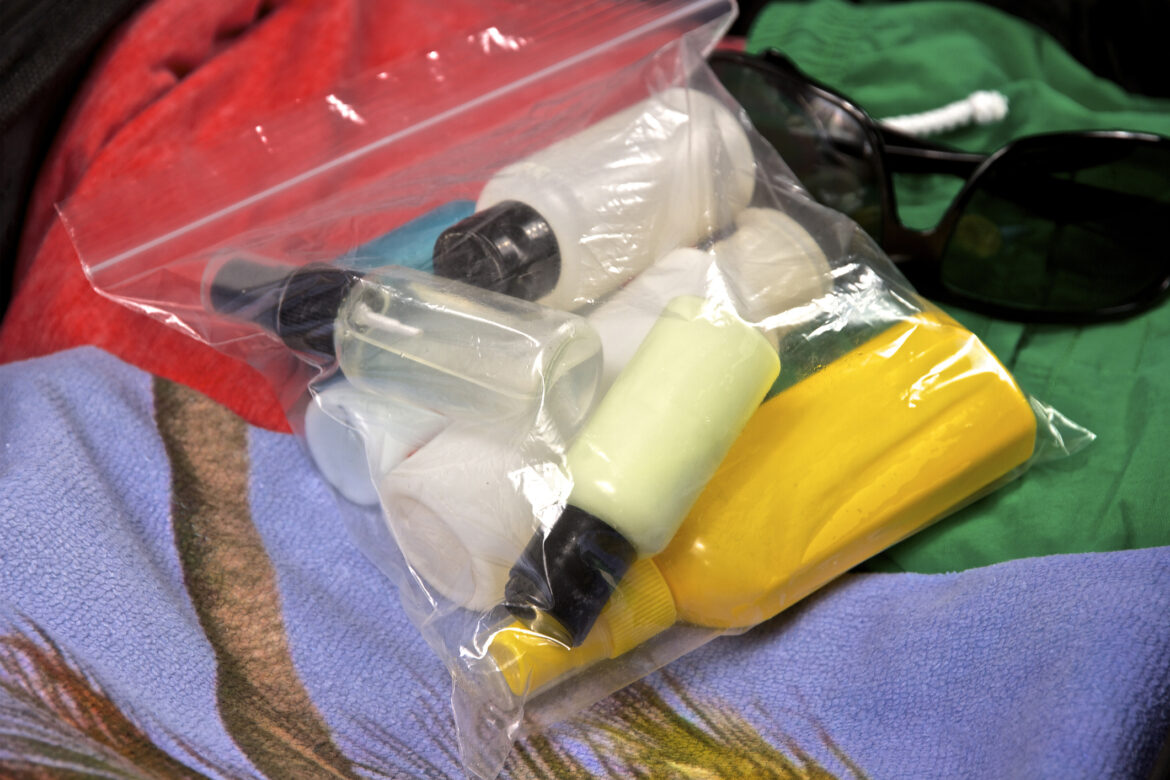Advertiser & Editorial Disclosure: The Bulkhead Seat earns an affiliate commission for anyone approved through the links below. This compensation may impact how and where links appear on this site. We work to provide the best publicly available offers to our readers. We frequently update them, but this site does not include all available offers. Opinions, reviews, analyses & recommendations are the author’s alone, and have not been reviewed, endorsed, or approved by any of these entities.
After almost 20 years of strict restrictions on liquids in carry-on bags, passengers may soon be able to bring full-sized toiletries, beverages, and more through airport security. Next-generation screening technology will enable the European Union (EU) and the United Kingdom to lift the long-standing 100ml liquid rule at airports equipped with the new scanners.
The European Commission confirmed that explosive detection systems capable of safely screening larger liquid containers have been successfully tested and approved by the European Civil Aviation Conference (ECAC) as of June 2025. Manufacturers can now submit their scanners for EU certification and deployment in the future.
The 100ml rule was introduced in 2006 after authorities foiled a terrorist plot involving liquid explosives. Until now, traditional scanners were unable to reliably detect dangerous substances in larger bottles. This forced travelers to squeeze liquids into tiny containers in clear plastic bags.

The new computed tomography (CT) scanners will solve the problem and offer more advanced scans of liquids and gels. They will also spare passengers the hassle of removing laptops and tablets from their bags. Several airports have already installed the new scanners and started relaxing liquid restrictions. These include:
- Birmingham Airport (BHX)
- Edinburgh Airport (EDI)
- Milan Linate Airport (LIN)
- Silvio Berlusconi Milan Malpensa Airport (MXP) (Terminal 1 only)
- Leonardo da Vinci Rome Fiumicino Airport (FCO)
Additional airports, including Amsterdam Airport Schiphol (AMS), Berlin Brandenburg Airport (BER), and Frankfurt Airport (FRA), have installed the technology and are expected to implement the new procedures later this year. Up to two liters of liquid will be allowed in passengers’ carry-on bags.
Despite the technological advances and availability, the rollout will not be uniform. Equipping an airport with the scanners is costly, and it is not mandatory under current EU law. For example, London Heathrow Airport (LHR) (Europe’s busiest) has yet to install the machines. Officials estimate the investment will exceed $1 billion. This has been heavily enforced in London Heathrow Airport (LHR) with agents scrutinizing every single little bottle. I can’t wait for the change to happen there.
Travelers will encounter inconsistent rules depending on where they fly for the foreseeable future. For now, Europe remains in a transitional phase. The pending changes represent a major convenience upgrade for passengers and a likely end to one of the most frustrating aspects of modern air travel.
Anthony’s Take: For travelers within Europe, the days of cramming toiletries into 100ml bottles and small plastic bags are numbered. It will be years before this is uniform, but it’s progress. Now, we need the United States to follow.
(Image Credits: PoppyPixels and heinstirred via iStock.)
User Generated Content Disclosure: The Bulkhead Seat encourages constructive discussions, comments, and questions. Responses are not provided by or commissioned by any bank advertisers. These responses have not been reviewed, approved, or endorsed by the bank advertiser. It is not the responsibility of the bank advertiser to respond to comments.
Advertiser & Editorial Disclosure: The Bulkhead Seat earns an affiliate commission for anyone approved through the links above This compensation may impact how and where links appear on this site. We work to provide the best publicly available offers to our readers. We frequently update them, but this site does not include all available offers. Opinions, reviews, analyses & recommendations are the author’s alone, and have not been reviewed, endorsed, or approved by any of these entities.
